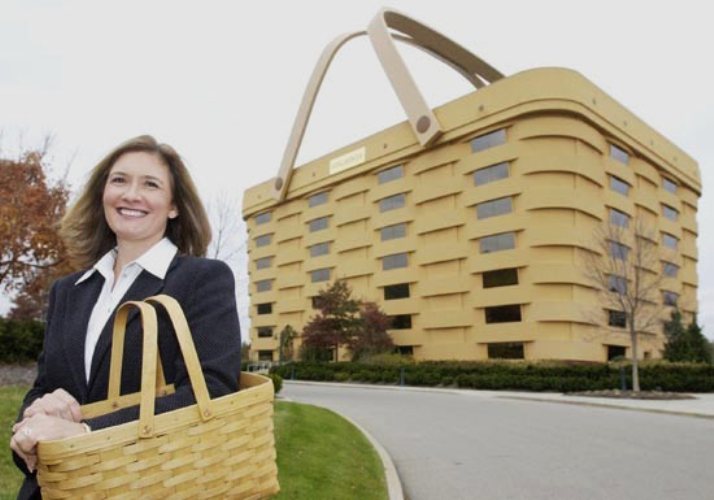
The Basket Building
Life Desk
Published:05 Jun 2021, 12:10 PM

The Basket Building
Unsurprisingly, this building is owned by a basket-making firm. The Longaberger Company has been manufacturing picnic-packers of the maple-wood variety from its office here in Ohio since 1997. But as the demand for baskets has reduced, as has the company’s need for such a quirky HQ; employees were actually moved to a different – far less weavy – building earlier this year. If you want to see this unique piece of architecture in the flesh, visit quick, before the owners decide to pull it down. The seven-story, 180,000-square-foot building was designed by The Longaberger Company, and executed by NBBJ and Korda Nemeth Engineering. The building opened in 1997. The basket handles weigh almost 150 tons and can be heated during cold weather to prevent ice damage. Originally, Dave Longaberger wanted all of the Longaberger buildings to be shaped like baskets, but only the headquarters was completed at the time of his death. The company stopped paying property taxes on the building at the end of 2014. Employees moved out in 2016.
In December 2017, the building was purchased by Steve Coon, a Canton, Ohio–based developer who owns Coon Restoration, and his partner, Bobby George, of Cleveland. By November 2018, the pair had put it up for sale. In 2019, the building had not sold and Coon announced plans to turn the building into a luxury hotel and has been working toward having the building added to the National Register of Historic Places.
On October 20, 2019, Heritage Ohio – the state's official historic preservation organization – held the first tour of the building since its 2016 closing as part of fundraising efforts. More than 600 people participated. Executive director Joyce Barrett said, “People were in tears and hugging each other” because "they were so happy to be back in the Basket.”
Longaberger was one of the primary employers in the area near Dresden, Ohio, where it was founded; at its peak in 2000, it employed more than 8,200 people and had $1 billion in sales. The company later moved to Newark, Ohio. A family-owned and operated business, the Longaberger Company was started by Dave Longaberger in 1973. Longaberger used multi-level marketing to sell products. The company had about 45,000 independent distributors (called Home Consultants) in the United States who sold Longaberger products directly to customers.
In 1919, J.W. Longaberger accepted an apprenticeship with The Dresden Basket Factory. Although the Dresden Basket Factory closed during the Great Depression, Longaberger continued to make baskets on the weekends. He and his wife Bonnie Jean (Gist) Longaberger eventually raised enough money to purchase the closed basket factory and start a business of their own.
One of J.W. and Bonnie's children, Dave, opened J.W.'s Handwoven Baskets in 1973. Starting in 1978, the company began selling Longaberger baskets through home shows using a multi-level marketing model. Each basket was handmade, signed, and dated by the maker. At its peak, the company employed more than 8,200 people, not counting its direct sales consultants. A combination of a recession and changing tastes in home decor combined to send sales, which peaked in 2000 at $1 billion, to about $100 million in 2012. In 2013, the company was taken over by CVSL, Inc.
In May 2015, Tami Longaberger, who had led the company since her father died in 1999, resigned as chief executive officer and director of the company.
In February 2016, the company said it would sell the Basket Building and move its employees to Longaberger's factory in Frazeysburg, Ohio.
As of April 2016, there were fewer than 75 full-time and part-time employees; about 30 of those still made baskets.
On May 4, 2018, a note was sent out from a sales force supervisor that the company had ceased operations. The Longaberger brand was revived in 2019 when its intellectual property was purchased by Xcel Brands, led by Robert W. D'Loren, and a licensing agreement was reached with basket-weavers Dresden & Co. Tami Longaberger and her sister took part in the firm's re-launch.